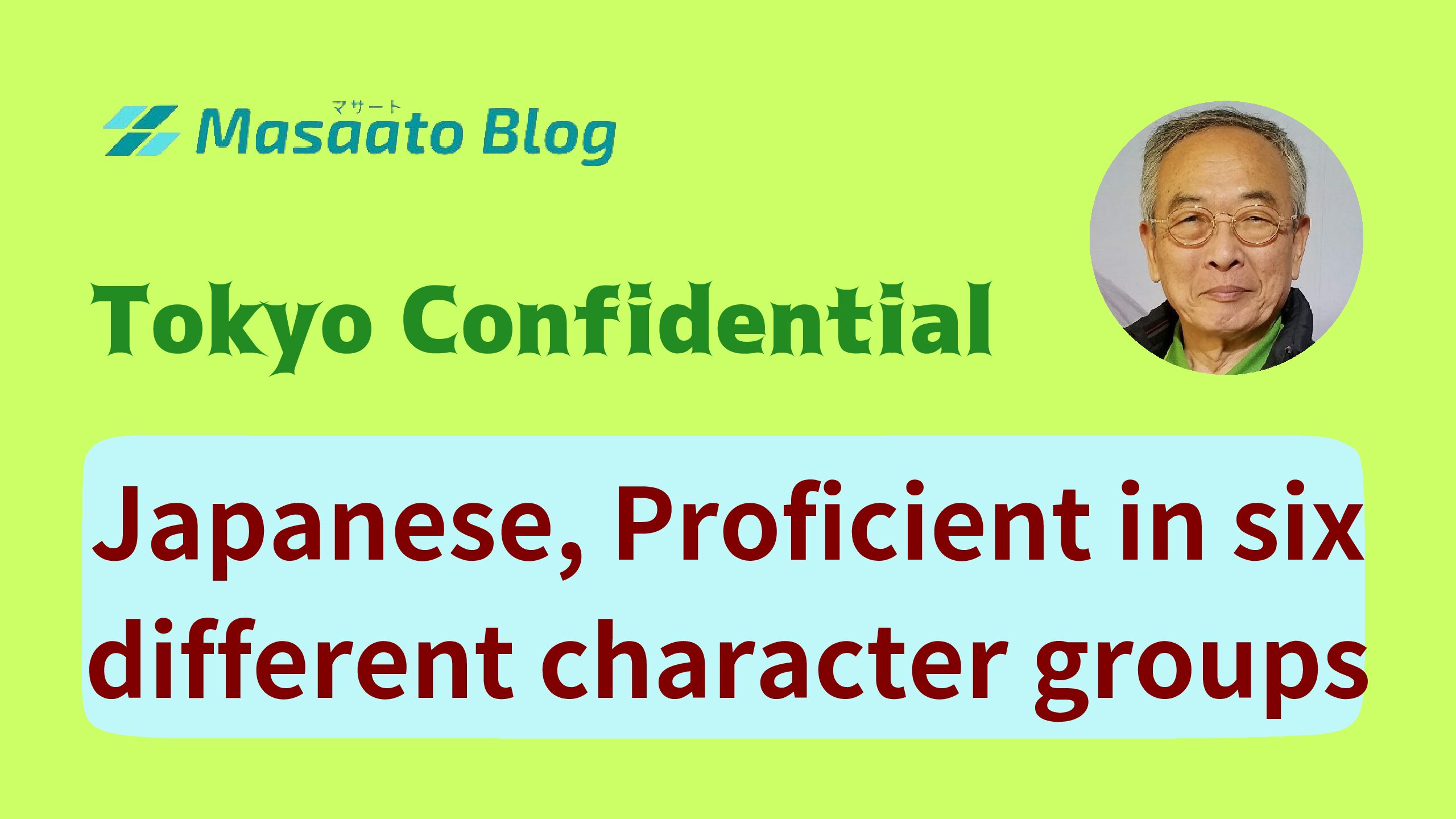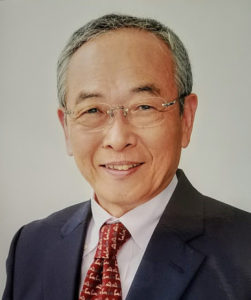People in many countries around the world use only two character groups every day: alphabets or similar local letters and numbers. We, the Japanese, however, use six different groups of characters every day. Even elementary school kids do.
【contents】
Japanese language, not belonging to any language family
Once upon a time, when Europeans went to India, they noticed that European and Indian languages were similar. After comparing various words, they found that Indian and European languages were relatives.
These relatives are now called Indo-European (family of) languages. For example, English, French, German, Spanish, Russian, Greek, Persian, Sanskrit, Hindi, Urdu, etc.
The various languages of the world are thus classified into several language families.
Our the Japanese, however, is a rare language that is not classified into any language family.
Composition of Japanese
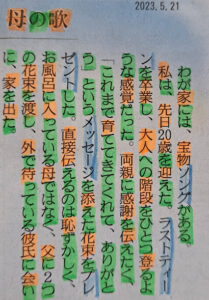 We, the
We, the Japanese currently use Kanji(orenge color in the picture), Hiragana(green), and Katakana(blue) as our written characters. Romaji, a Roman alphabet based on the English alphabet, is also used. Numbers include both Arabic numerals and Chinese numerals. Japanese newspapers and various other documents are written using these six groups of characters.
Japanese currently use Kanji(orenge color in the picture), Hiragana(green), and Katakana(blue) as our written characters. Romaji, a Roman alphabet based on the English alphabet, is also used. Numbers include both Arabic numerals and Chinese numerals. Japanese newspapers and various other documents are written using these six groups of characters.
We Japanese write Japanese vertically like a newspaper in Japan and also horizontally like in English. Vertical writing was originally the norm for the Japanese, but today, horizontal writing is also widely used, especially in business.
Origin of Kanji
Kanji characters originated in China a long time ago and were introduced to Japan later. A typical Kanji-Japanese dictionary in Japan today contains approximately 10,000 Kanji characters.
There are two groups of Kanji: “Jyoyo Kanji”(common kanji) and “Kyoiku Kanji”(educational kanji). Joyo Kanji are the 2,136 characters learned in compulsory education. Kyoiku Kanji is the common name for the 1,026 compulsory Kanji learned during the six years of elementary school out of the 2,136 Joyo Kanji.
During the 6th and 7th centuries, Japan began to adopt Confucianism, Buddhism, and Taoism from mainland China and the Korean peninsula. To understand these ideas and religions, the ability to read books written in Chinese characters became necessary, and by the 7th century, the number of people who could read increased, including returnees from the Sui and Tang dynasties of China.
In the beginning, however, there were no Japanese characters in Japan, and kanji were used to represent Japanese pronunciations, but the meaning of spoken Japanese and the meaning of the kanji were different. The spoken language was Japanese and the written language was Kanji.
Hiragana and Katakana
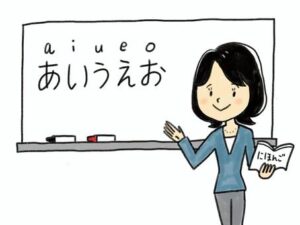 In the late 7th to late 8th century, Japan’s oldest collection of waka poems, Manyoshu, was compiled, and the waka poems included in this collection are written only in kanji.
In the late 7th to late 8th century, Japan’s oldest collection of waka poems, Manyoshu, was compiled, and the waka poems included in this collection are written only in kanji.
The kanji thus used were called Manyogana. However, kanji in their original form was too complex, so they were gradually replaced by the written form, which became hiragana.
On the other hand, katakana is a character that uses a part of kanji.
Hiragana and katakana are Japanese phonetic characters. Hiragana originated from a cursive kanji form, while katakana originated from a part of kanji. Both have 48 characters and the same pronunciation can be expressed in hiragana and katakana, which have been used since the 7th to 9th centuries.
Hiragana and Katakana are used with kanji as part of normal Japanese text these days.
Katakana is used primarily for the following purposes;
Imported words, names of foreign people and places (except China), onomatopoeic and mimetic words, Japanese names of living creatures and animals, etc.
Kanji readings
Kanji can be read in two different ways: “on-yomi” and “kun-yomi”. Roughly speaking, the “on-yomi” is close to the Chinese language pronunciation, and the kun-yomi is used to express the traditional Japanese language meaning.
However, some kanji can be read in five or six different ways, and even Japanese people are sometimes at a loss as to how to read them.
Japanese sentences are traditionally written from top to bottom. In business, it is very often written horizontally from left to right in the Western style.
When a company name is written horizontally on a truck or van, on the left side of the truck, it is written from left to right (from front to back), but on the right side, many trucks are written from right to left (that is, from front to back). This is a phenomenon that is not possible in English.
Japanese names
 Japanese individual names consist of a first name and a family name, and most Japanese do not have a middle name.
Japanese individual names consist of a first name and a family name, and most Japanese do not have a middle name.
Usually, the first name and family name are written in kanji, but hiragana and katakana may be used for the first name.
What is troublesome is that when you write your name and address on various application forms submitted to municipal offices, life insurance companies, sports clubs, etc., you must first write them in kanji, and then write their readings in hiragana or katakana.
No other country makes such a double effort.
Kanji names have meaning
Japanese kanji names have meanings. For example, my name is written in kanji as 新津正人, Masato Niitsu.
The first two characters are the family name and are pronounced as niitsu. The first kanji is pronounced nii, meaning “new”. The second kanji is pronounced tsu and means “port”. In other words, my family name means “new port”.
The third and fourth letters represent my first name, which you can read as masato. The meaning of the third kanji is “right” or “honest”. The fourth kanji means “person,” so my first name means “honest person”.
As you can see, Japanese names have some meanings, so it is a good idea to ask Japanese people when you meet them.
When Japanese parents think of a name for their child, they search for various kanji to wish for the child’s future happiness.
About Numbers
Let me explain about numbers used in Japanese books and newspapers.
Currently, we Japanese use two different groups of characters to represent numbers.
One group is the most widely used Arabic numbers in the world: 1, 2, 3, 4, 5, 6, 7, 8,9, 0.
These Arabic numerals were introduced to Japan from abroad during the Edo period (1603-1868) and began to be used after the school education system was established during the Meiji period (1868-1912), and have been used to this day.
The other group of Chinese numerals is;
一 (1), 二 (2), 三 (3), 四(4), 五 (5), 六 (6), 七 (7), 八(8), 九(9), and 〇(0).
Chinese numerals originated from the gestures used in China to represent numbers (finger numbers) and from the ancient inscriptions of Chinese characters on oracle bones and carapaces.
Nowadays, Arabic numerals are used for horizontal writing. Chinese numerals are used for vertically written sentences, written from top to bottom.
Units for Chinese numerals
In the West, numerals are written in three-digit units: thousands, millions, billions, trillions, etc. In Japanese Kanji numerals, the units are ones, tens, millions, thousands, millions, billions, trillions, etc. In Japanese Kanji numerals, the units are ones, tens, millions, thousands, millions, billions, trillions, etc.
High literacy rate in Japan
Japan’s compulsory education system provides free education to all boys and girls between the ages of 7 and 15. Thus, almost Japanese can read and comprehend texts containing Kanji characters.
This is the age at which students study in elementary and junior high schools, and 96% of both boys and girls go on to senior high school (3 years).
There are both public and private high schools in Japan. Tuition is 100% self-paid.
How to study Japanese
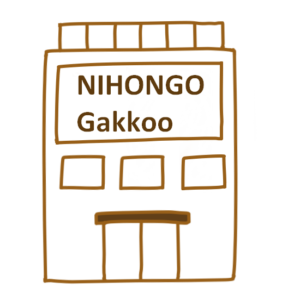 To study Japanese, it is best to start by mastering hiragana and katakana, 48 characters each.
To study Japanese, it is best to start by mastering hiragana and katakana, 48 characters each.
This is the basis for speaking, listening, and writing Japanese.
Next, you should master the 1,026 kanji that Japanese people learn in the first six years of elementary school.
After that, you should study kanji and idioms related to your field of interest, such as cooking, welfare, or business.

